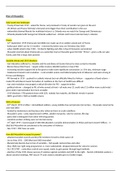Rise of Mussolini
Italy’s post-war landscape
- Treaty of Germain 1919 – asked for Fiume, not promised in Treaty of London nor given at the end
- US, Britain and France felt Italy’s demand were bigger than their contribution in the war
- nationalists blamed liberals for mutilated victory i.e. Orlando was no match for George and Clemenceau
- Orlando pleaded with George but Orlando walked out – Britain and France took Germany’s colonies
Fiume
- 12th September 1919 D’Annunzio led 2000 men made up of ex-soldiers seized port of Fiume
- Italian govt didn’t act for 15 months – removed by Italian navy on Christmas Day 2020
- when Giolitti acted in Dec 1920 – 52 died in fighting and after 4 days D’Annunzio surrendered
- Mussolini worried about D’Annunzio as a potential rival so Mussolini gave him title ‘’Prince’’, given a villa on Lake
Garda, paid him a large state pension
Socialist threat and 1919 elections
- war industries suffered i.e. Ansaldo and Ilva and Banca di Sconto forced to close as tied to Ansaldo
- Bienno Rosso (Red Years) – largest strike involves 400,000 workers in Sep 1920
- increasing socialist support led to the govt to make some significant concessions i.e. 8 hr day, minimum wage
- landowners feared rural revolution – rural socialist unions controlled employment of labourers and were strong in
Ferrara and Bologna
- PPI formed in 1919 – pushed for catholic interest but not officially linked to Vatican – supporter of land reform –
made PPI anti-liberal meant formation of coalitions in the form of Giolitti was difficult
- war and revolution encouraged a radical direction for PSI – supports strikes
- political reform – changed to PR, all who served at front + all male over 21 could vote (11 million more could vote) –
gives wider representation but more unstable
- 1919 elections = PSI greatest share with 32%, nobody has majority, old liberals remain in power
- Nitti’s govt fell in 1920 so Giolitti returns
Birth of fascism
- 23rd March 1919 in Milan = demobilised soldiers, young middle class and private mini armies – 50 people came but by
June had 3000
- funded by landowners and business who relied on them to crush rebellions
- Mussolini’s aims = unity experienced in WW1, abolish monarchy, vote for women, 8hr day
- party didn’t distinguish from other left-wing parties
- socialists workers striking were an internal enemy
- 15th April 1919 = fascist squad of 200-300 attacked a socialist demonstration in Milan and burnt Avanti! Offices – 4
died but Mussolini not sanctioned so he saw power of violence
- Nov 1919 = PNF have no seats
How did Mussolini increase his power?
- attacked socialist councils and key PSI members forced to drink castor oil
- Jan to May 1921 – 200 killed and 1000 wounded
- liberals help fascists due to fear of socialists – felt squads restored law and order
- May 1920 new right wing programme i.e. more nationalistic, dropped demand for votes for women
- Oct 1921 PNF – centralises control over squad, wants to gain power through legal methods
- election of May 1921 shows success of violence against socialists and shift to the right – fascists intimidate workers +
attack socialist meetings, PNF secure 7% and creates unstable govt so Giolitti resigns





